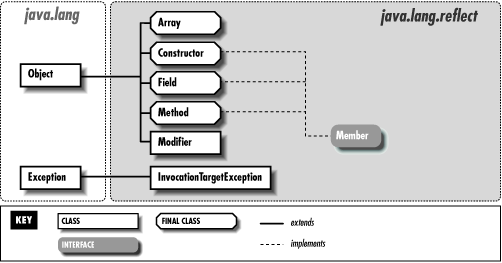


The method is: private native void 0(int) The method is: public void ($UncaughtExceptionHandler) The method is: public $UncaughtExceptionHandler () The method is: public static $UncaughtExceptionHandler () The method is: public static void ($UncaughtExceptionHandler) The method is: public final synchronized void () +1 From the JavaDoc for getMethod (): 'Returns a Method object that reflects the specified public member method of the class or interface represented by this Class object. The method is: public final native boolean () I believe Class.getMethod () is limited to public methods. The method is: public static void (long,int) throws The method is: public static native void (long) throws The method is: private static synchronized long () The method is: private static synchronized int ()
#Java reflection class software
It allows you to research a software component and describe its capabilities dynamically, at run time instead of at compile time. Reflection is a crucial capability, especially when using components called Java Beans. This is often provided by the package and elements. The method is: public final void (boolean) Reflection is the ability of software to research itself. The method is: public static native void () The method is: public static native boolean () Use Java reflection to generate schemas and protocols for existing classes. The method is: private void (,long,boolean) The method is: public final void () throws The method is: public final synchronized void (long) throws The method is: public final synchronized void (long,int) throws The method is: public synchronized void () The method is: private static native void () The method is: private native boolean (boolean) Method methods = c.getDeclaredMethods() įor(int i = 0 i < methods.length i++) Output The method is: public void () However, the inherited methods are not included.Īlso, the getDeclaredMethods() method returns a zero length array if the class or interface has no methods or if a primitive type, array class or void is represented in the Class object.Ī program that demonstrates this is given as follows − Example Using reflection we can inspect a class or an interface, get their constructors, methods, and fields information at runtime even though the class is not accessible at compile time. You can call getField() on the Class object to get a Field object for a public. Java Reflection API provides the ability to inspect and modify the runtime behavior of applications.
#Java reflection class how to
This method returns an array that contains all the Method objects with public, private, protected and default access. This Java tutorial describes how to get and set a field using reflection. The methods of a class can be listed using the () method.


 0 kommentar(er)
0 kommentar(er)
